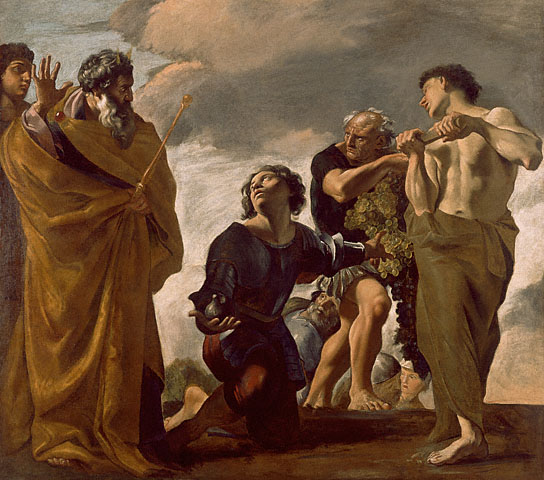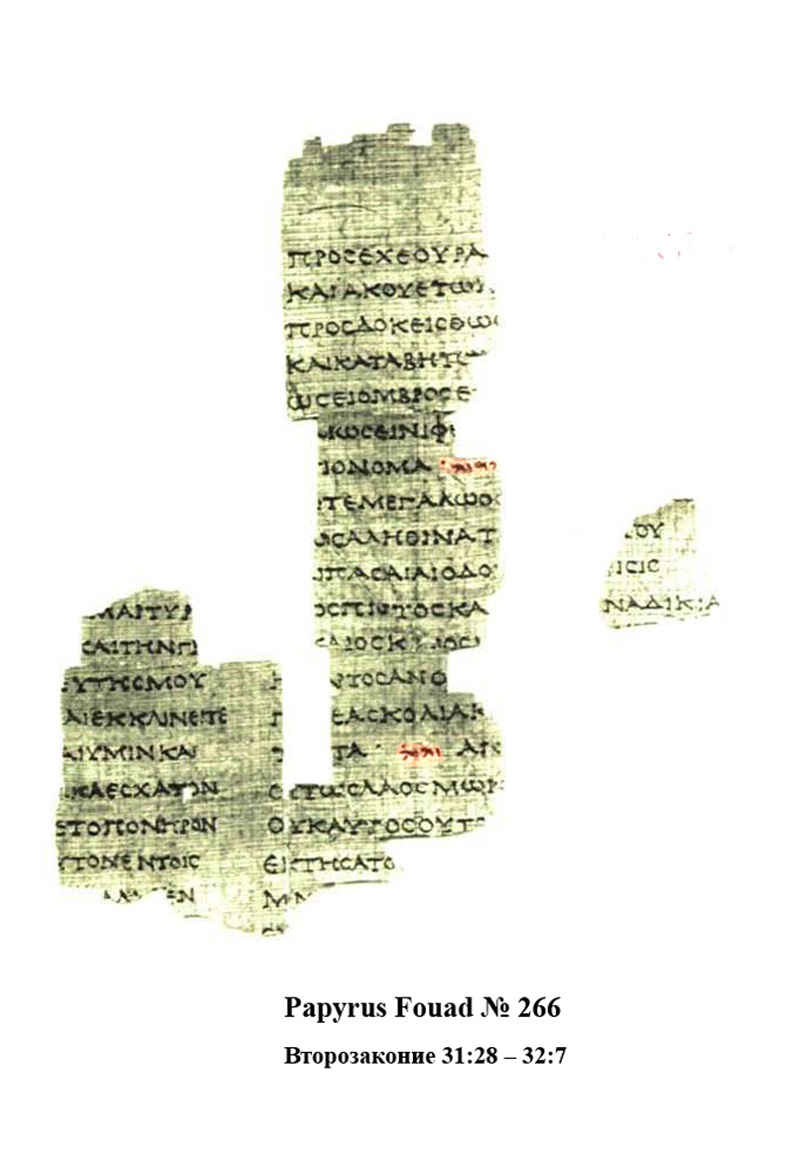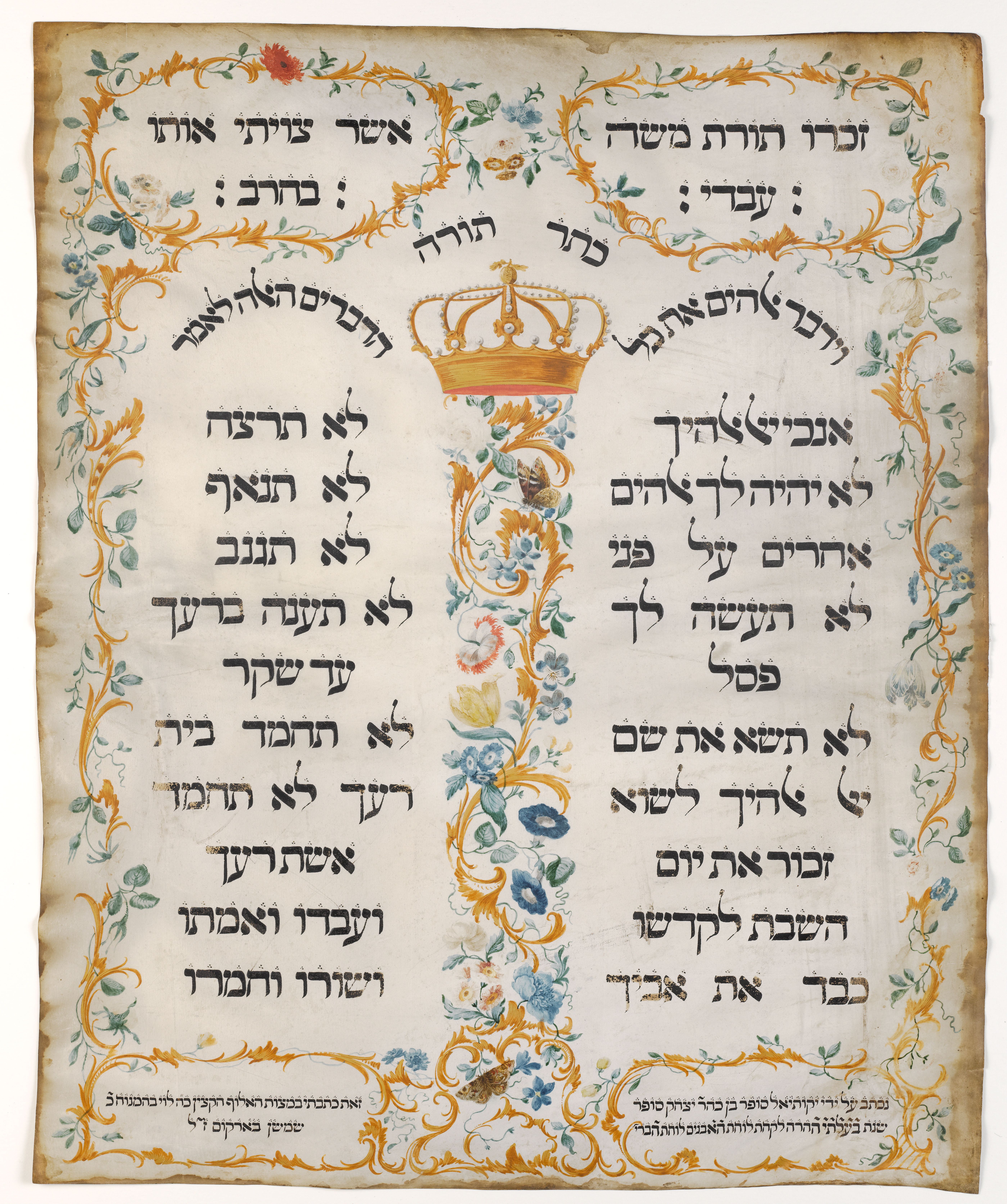|
Shema
''Shema Yisrael'' (''Shema Israel'' or ''Sh'ma Yisrael''; , “Hear, O Israel”) is a Jewish prayer (known as the Shema) that serves as a centerpiece of the morning and evening Jewish prayer services. Its first verse encapsulates the monotheistic essence of Judaism: "Hear, O Israel: YHWH our God, YHWH is one" (), found in . The first part can be translated as either "The our God" or "The is our God", and the second part as either "the is one" or as "the one " (in the sense of "the alone"), since Hebrew does not normally use a copula in the present tense, so translators must decide by inference whether one is appropriate in English. The word used for "the " is the tetragrammaton YHWH. Observant Jews consider the ''Shema'' to be the most important part of the prayer service in Judaism, and its twice-daily recitation as a ''mitzvah'' (religious commandment). Also, it is traditional for Jews to say the ''Shema'' as their last words, and for parents to teach their children ... [...More Info...] [...Related Items...] OR: [Wikipedia] [Google] [Baidu] |
Va'etchanan
Va'etchanan (—Hebrew for "and I will plead," the first word in the parashah) is the 45th weekly Torah portion (, ''parashah'') in the annual Jewish cycle of Torah reading and the second in the Book of Deuteronomy. It comprises Deuteronomy 3:23–7:11. The parashah tells how Moses asked to see the Land of Israel, made arguments to obey the law, recounted setting up the Cities of Refuge, recited the Ten Commandments and the ''Shema'', and gave instructions for the Israelites' conquest of the Land. The parashah is made up of 7,343 Hebrew letters, 1,878 Hebrew words, 122 verses, and 249 lines in a Torah Scroll (''Sefer Torah''). Jews in the Diaspora generally read it in late July or August. It is always read on the special Sabbath '' Shabbat Nachamu'', the Sabbath immediately after ''Tisha B'Av''. As the parashah describes how the Israelites would sin and be banished from the Land of Israel, Jews also read part of the parashah, Deuteronomy 4:25–40, as the Torah reading for the ... [...More Info...] [...Related Items...] OR: [Wikipedia] [Google] [Baidu] |
Eikev
Eikev, Ekev, Ekeb, Aikev, or ʿEqeb (—"if ou follow" the second word, and the first distinctive word in the parashah) is the 46th weekly Torah portion (, ''parashah'') in the annual Jewish cycle of Torah reading and the third in the Book of Deuteronomy. It comprises Deuteronomy 7:12–11:25. The parashah tells of the blessings of obedience to God, the dangers of forgetting God, and directions for taking the Land of Israel. Moses recalls the making and re-making of the Tablets of Stone, the incident of the Golden Calf, Aaron's death, the Levites' duties, and exhortations to serve God. The parashah is made up of 6865 Hebrew letters, 1747 Hebrew words, 111 verses, and 232 lines in a Torah Scroll (, ''Sefer Torah''). Jews generally read it in August or, on rare occasions, late July. Readings In traditional Shabbat Torah reading, the parashah is divided into seven readings or , '' aliyot''. In the Hebrew Bible, Parashat Eikev has six "open portion" (, ''petuchah'') divisions (rou ... [...More Info...] [...Related Items...] OR: [Wikipedia] [Google] [Baidu] |
Berakhot (tractate)
Berakhot (, lit. "Blessings") is the first tractate of '' Seder Zeraim'' ("Order of Seeds") of the Mishnah and of the Talmud. The tractate discusses the rules of prayers, particularly the Shema and the Amidah, and blessings for various circumstances. Since a large part of the tractate is concerned with the many ''berakhot'' (), all comprising the formal liturgical element beginning with the words "Blessed are you, Lord our God....", it is named for the initial word of these special form of prayer. ''Berakhot'' is the only tractate in ''Seder Zeraim'' to have Gemara – rabbinical analysis of and commentary on the Mishnah – in the Babylonian Talmud. There is however Jerusalem Talmud on all the tractates in ''Seder Zeraim''. There is also a Tosefta for this tractate. The Jewish religious laws detailed in this tractate have shaped the liturgies of all the Jewish communities since the later Talmudic period and continue to be observed by traditional Jewish communities until ... [...More Info...] [...Related Items...] OR: [Wikipedia] [Google] [Baidu] |
Jewish Prayer
Jewish prayer (, ; plural ; , plural ; Yinglish: davening from Yiddish 'pray') is the prayer recitation that forms part of the observance of Rabbinic Judaism. These prayers, often with instructions and commentary, are found in the '' Siddur'', the traditional Jewish prayer book. Prayer, as a "service of the heart," is in principle a Torah-based commandment. It is mandatory for Jewish women and men. However, the rabbinic requirement to recite a specific prayer text does differentiate between men and women: Jewish men are obligated to recite three prayers each day within specific time ranges ('' zmanim''), while, according to many approaches, women are only required to pray once or twice a day, and may not be required to recite a specific text. Traditionally, three prayer services are recited daily: * Morning prayer: ''Shacharit'' or ''Shaharit'' (, "of the dawn") * Afternoon prayer: '' Mincha'' or ''Minha'' (), named for the flour offering that accompanied sacrific ... [...More Info...] [...Related Items...] OR: [Wikipedia] [Google] [Baidu] |
Shlach
''Shlach, Shelach, Sh'lah, Shlach Lecha'', or ''Sh'lah L'kha'' ( or —Hebrew language, Hebrew for "send", "send to you", or "send for yourself") is the 37th weekly Torah portion (, ''parashah'') in the annual Judaism, Jewish cycle of Torah reading and the fourth in the Book of Numbers. Its name comes from the incipit, first distinctive words in the parashah, in Numbers 13:2. ''Shelach'' () is the sixth and ''lecha'' () is the seventh word in the parashah. The parashah tells the story of the The Twelve Spies, twelve spies sent to assess the Promised Land, promised land, commandments about offerings, the story of the Shabbat, Sabbath violator, and the commandment of the Tzitzit, fringes (, ''tzitzit''). The parashah constitutes Numbers 13:1–15:41. It is made up of 5,820 Hebrew letters, 1,540 Hebrew words, 119 Chapters and verses of the Bible, verses, and 198 lines in a Torah Scroll (''Sefer Torah''). Jews generally read it in June or early July. Readings In traditional Sabbath To ... [...More Info...] [...Related Items...] OR: [Wikipedia] [Google] [Baidu] |
Judaism
Judaism () is an Abrahamic religions, Abrahamic, Monotheism, monotheistic, ethnic religion that comprises the collective spiritual, cultural, and legal traditions of the Jews, Jewish people. Religious Jews regard Judaism as their means of observing the Mosaic covenant, which they believe was established between God in Judaism, God and the Jewish people. The religion is considered one of the earliest monotheistic religions. Jewish religious doctrine encompasses a wide body of texts, practices, theological positions, and forms of organization. Among Judaism's core texts is the Torah—the first five books of the Hebrew Bible—and a collection of ancient Hebrew scriptures. The Tanakh, known in English as the Hebrew Bible, has the same books as Protestant Christianity's Old Testament, with some differences in order and content. In addition to the original written scripture, the supplemental Oral Torah is represented by later texts, such as the Midrash and the Talmud. The Hebrew ... [...More Info...] [...Related Items...] OR: [Wikipedia] [Google] [Baidu] |
Knesset Menorah
The Knesset Menorah (Hebrew: מנורת הכנסת ''Menorat HaKnesset'') is a bronze menorah (Temple), menorah that is 4.30 meters high and 3.5 meters wide and weighs 4 tons. It is located at the edge of Wohl Rose Park (Hebrew ''Gan Havradim'', "Rose Garden") opposite the Knesset in Jerusalem. It was designed by Benno Elkan (1877–1960), a Jewish sculptor who escaped from his native Germany to the United Kingdom. It was presented to the Knesset as a gift from the British Parliament on April 15, 1956, in honour of the eighth anniversary of Israeli independence. The Knesset Menorah was modelled after the golden candelabrum that stood in the Temple in Jerusalem. A series of bronze reliefs on the Menorah depict the struggles to survive of the Jewish people, depicting formative events, images and concepts from the Hebrew Bible and Jewish history. The engravings on the six branches of the Menorah portray episodes since the Jewish Babylonian captivity, exile from the Land of Israel. T ... [...More Info...] [...Related Items...] OR: [Wikipedia] [Google] [Baidu] |
Talmud
The Talmud (; ) is the central text of Rabbinic Judaism and the primary source of Jewish religious law (''halakha'') and Jewish theology. Until the advent of Haskalah#Effects, modernity, in nearly all Jewish communities, the Talmud was the centerpiece of Jewish culture, Jewish cultural life and was foundational to "all Jewish thought and aspirations", serving also as "the guide for the daily life" of Jews. The Talmud includes the teachings and opinions of thousands of rabbis on a variety of subjects, including halakha, Jewish ethics, Jewish philosophy, philosophy, Jewish customs, customs, Jewish history, history, and Jewish folklore, folklore, and many other topics. The Talmud is a commentary on the Mishnah. This text is made up of 63 Masekhet, tractates, each covering one subject area. The language of the Talmud is Jewish Babylonian Aramaic. Talmudic tradition emerged and was compiled between the destruction of the Second Temple in 70 CE and the Arab conquest in the early seve ... [...More Info...] [...Related Items...] OR: [Wikipedia] [Google] [Baidu] |
Book Of Deuteronomy
Deuteronomy (; ) is the fifth book of the Torah (in Judaism), where it is called () which makes it the fifth book of the Hebrew Bible and Christian Old Testament. Chapters 1–30 of the book consist of three sermons or speeches delivered to the Israelites by Moses on the Plains of Moab, shortly before they enter the Promised Land. The first sermon recounts the Moses#The years in the wilderness, forty years of wilderness wanderings which had led to that moment and ends with an exhortation to observe the law. The second sermon reminds the Israelites of the need to follow Yahweh and the laws (or teachings) he has given them, on which their possession of the land depends. The third sermon offers the comfort that, even should the nation of Israel prove unfaithful and so lose the land, with repentance all can be restored. The final four chapters (31–34) contain the Song of Moses, the Blessing of Moses, and the narratives recounting the passing of the mantle of leadership from Mose ... [...More Info...] [...Related Items...] OR: [Wikipedia] [Google] [Baidu] |
Mishneh Torah
The ''Mishneh Torah'' (), also known as ''Sefer Yad ha-Hazaka'' (), is a code of Rabbinic Jewish religious law (''halakha'') authored by Maimonides (Rabbi Moshe ben Maimon/Rambam). The ''Mishneh Torah'' was compiled between 1170 and 1180 CE (4930 and 4940 AM), while Maimonides was living in Egypt, and is regarded as Maimonides' '' magnum opus''. Accordingly, later sources simply refer to the work as "''Maimon''", "''Maimonides''", or "''RaMBaM''", although Maimonides composed other works. ''Mishneh Torah'' consists of fourteen books, subdivided into sections, chapters, and paragraphs. It is the only medieval-era work that details all of Jewish observance, including those laws that are only applicable when the Temple in Jerusalem is in existence, and remains an important work in Judaism. Its title is an appellation originally used for the Biblical book of Deuteronomy, and its moniker, "Book of the Strong Hand", derives from its subdivision into fourteen books: the numerical v ... [...More Info...] [...Related Items...] OR: [Wikipedia] [Google] [Baidu] |
Ten Commandments
The Ten Commandments (), or the Decalogue (from Latin , from Ancient Greek , ), are religious and ethical directives, structured as a covenant document, that, according to the Hebrew Bible, were given by YHWH to Moses. The text of the Ten Commandments appears in three markedly distinct versions in the Bible: at Exodus , Deuteronomy , and the " Ritual Decalogue" of Exodus . The biblical narrative describes how God revealed the Ten Commandments to the Israelites at Mount Sinai amidst thunder and fire, gave Moses two stone tablets inscribed with the law, which he later broke in anger after witnessing the worship of a golden calf, and then received a second set of tablets to be placed in the Ark of the Covenant. Scholars have proposed a range of dates and contexts for the origins of the Decalogue. “Three main dating schemes have been proposed: (1) it was suggested that the Decalogue was the earliest legal code given at Sinai, with Moses as author, and the Amphictyony con ... [...More Info...] [...Related Items...] OR: [Wikipedia] [Google] [Baidu] |
Mitzvah
In its primary meaning, the Hebrew language, Hebrew word (; , ''mīṣvā'' , plural ''mīṣvōt'' ; "commandment") refers to a commandment Divine law, from God to be performed as a religious duty. Jewish law () in large part consists of discussion of these commandments. According to religious tradition, there are 613 commandments, 613 such commandments. In its secondary meaning, the word ''mitzvah'' refers to a deed performed in order to fulfill such a commandment. As such, the term ''mitzvah'' has also come to express an individual act of human kindness in keeping with the law. The expression includes a sense of heartfelt sentiment beyond mere legal duty, as "you shall love your neighbor as yourself" (Leviticus 19:18). For some ''mitzvot'', the purpose is specified in the Torah; though, the opinions of the Talmudic rabbis are divided between those who seek the Teleology, purpose of the ''mitzvot'' and those who do not question them. The former believe that if people were to ... [...More Info...] [...Related Items...] OR: [Wikipedia] [Google] [Baidu] |









